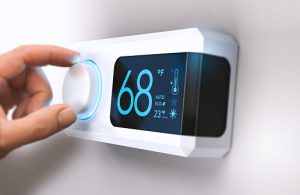
Nevertheless, living in a developed country like the United States allows us to live in relative comfort regardless of where we are, and this is partly due to our homes being temperature controlled. It’s no surprise that the human body has a sweet spot for what temperature it functions best in, but according to new research, major heath benefits can be gained from indoor temperature variation.
A research study published in the April 2017 edition of Building Research & Information suggests that exposure to temperatures outside of our comfort zones could help fight against diseases such as type 2 diabetes and obesity. The researchers say that being in mildly cold or warm environments that fall outside of the standard 21–22C set in most buildings increases the body’s metabolic processes and energy usage. It was observed that exposure to mild coldness influenced glucose metabolism, and after about 10 days of intermittent cold, patients saw a 40 percent increased sensitivity to insulin—results comparable to the best pharmaceutical treatments available today.
“It has previously been assumed that stable fixed indoor temperatures would satisfy comfort and health in most people. However, this research indicates that mild cold and variable temperatures may have a positive effect on our health and at the same time are acceptable or even may create pleasure,” said professor Wouter van Marken Lichtenbelt, author of the study.
The authors of the study believe that rethinking the concept of thermal comfort may be necessary to provide healthier solutions while maintaining comfort, while also saving energy and reducing costs for commercial buildings, which currently account for up to 40 percent of energy demand and create a significant proportion of CO2 emissions. This practice may also be applied to everyday homes and offices, dynamically shifting temperatures to support healthy human environments.
Related: Climate change may result in increased cases of type 2 diabetes




